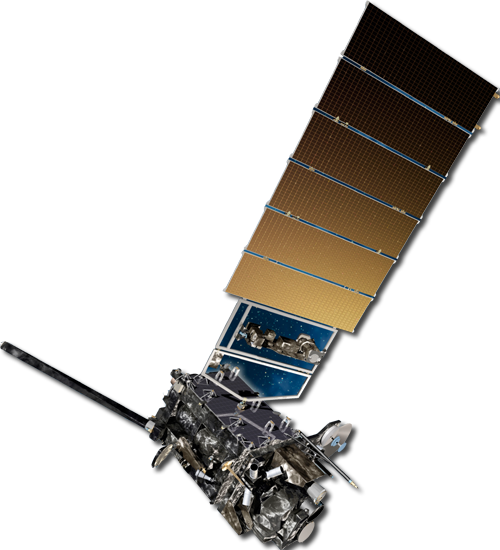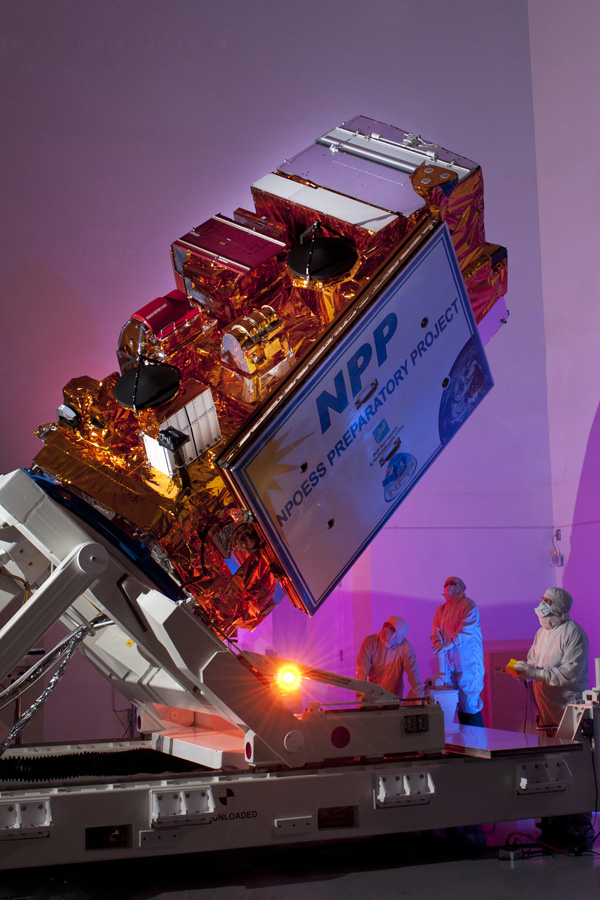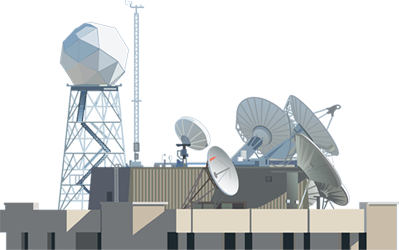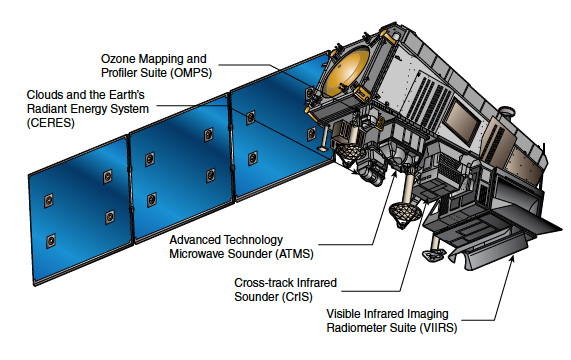10
The GOES-R and JPSS Satellite Era

Suomi NPP
Suomi NPP orbits the Earth about 14 times each day and observes nearly the entire surface, continuing key data records that are critical for climate change science.

NPP Satellite Completion
Ball Aerospace Facility
courtesy: Ball Aerospace
Suomi NPP Specs:
Weight: 4,600 pounds (2,100 kilograms)
Size: About the size of a small
school bus
Timing: Crosses the equator at about 1:30 p.m. local-time
each afternoon
Instruments:
- ATMS (Advanced Technology Microwave Sounder)
- used to create global models of temperature and moisture profiles
- CrIS (Cross-track Infrared Sounder)
- monitors atmospheric pressure and moisture, and used to produce improvements in short and long-term weather forecasting
- OMPS (Ozone Mapping and Profiler Suite)
- measures Earth's ozone levels, particularly near the poles where ozone levels fluctuate most
- VIIRS (Visible Infrared Imaging Radiometer Suite)
- collects visible and infrared views of Earth's surface processes (wildfires, land changes, ice movement)
- also used to measure atmospheric and oceanic properties (clouds, sea surface temperature)
- CERES (Clouds and the Earth's Radiant Energy System)
- measures reflected solar radiation, emitted terrestrial radiation, and total radiation
- used to monitor the natural and anthropogenic (human-caused) effects on the Earth's total thermal radiation budget.
| 3 / 12 |






